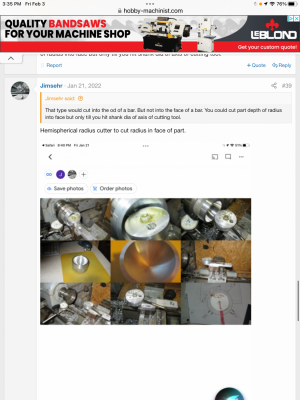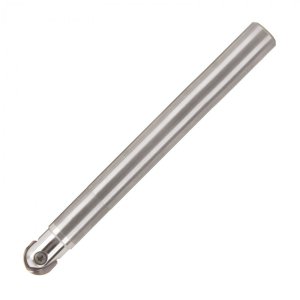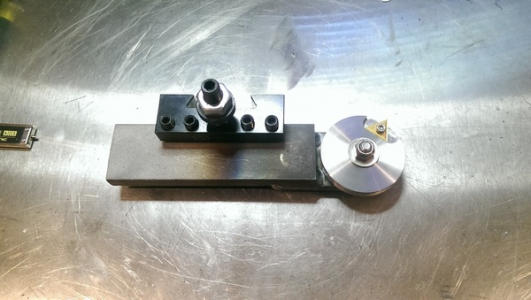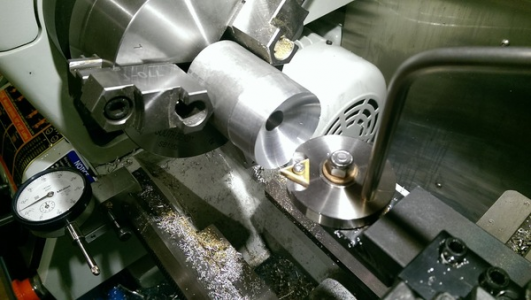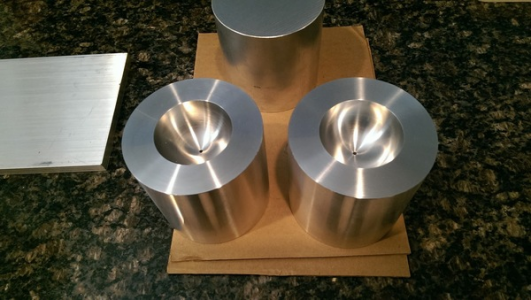- Joined
- Feb 21, 2022
- Messages
- 780
I have to make several Aluminium mould cavities of different sizes. The finish is more important than the size and they need to be polished. The cavities are a full half sphere.
I have 3 options:
1. Cnc machine the cavity with a boring bar or similar.
I'm not keen on the zero cutting speed at the centre and may be difficult to polish out any toolmarks. Getting the tool centre height spot on could be a pain.
2. A ball turning attachment on the centre lathe.
See above.
3. Cnc machine a "u" profile on the mill with a large radius ball end cutter and rotate 180 degrees at small angular movements. ( 1 degree movement = 180 cuts! )
This does away with the zero cutting speed at the centre but takes ages to get a decent overlap. It might be difficult to remove the cusps with abrasives as the cloth will follow the contours, leaving the geometry similar.
I think it may be possible to reverse the boring head technique for machining balls. Tilting the dividing head up at an angle to clear the tooling seems ok but I'm not sure if I will cut an ellipse?
Does anyone have any other methods I could explore?.
TIA.
I have 3 options:
1. Cnc machine the cavity with a boring bar or similar.
I'm not keen on the zero cutting speed at the centre and may be difficult to polish out any toolmarks. Getting the tool centre height spot on could be a pain.
2. A ball turning attachment on the centre lathe.
See above.
3. Cnc machine a "u" profile on the mill with a large radius ball end cutter and rotate 180 degrees at small angular movements. ( 1 degree movement = 180 cuts! )
This does away with the zero cutting speed at the centre but takes ages to get a decent overlap. It might be difficult to remove the cusps with abrasives as the cloth will follow the contours, leaving the geometry similar.
I think it may be possible to reverse the boring head technique for machining balls. Tilting the dividing head up at an angle to clear the tooling seems ok but I'm not sure if I will cut an ellipse?
Does anyone have any other methods I could explore?.
TIA.


